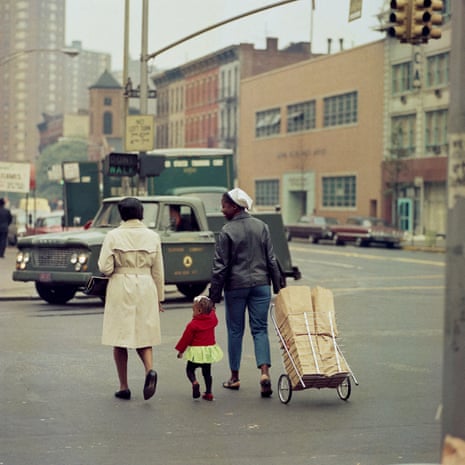Mario Carnicelli won a photography competition in his native Italy in 1966 and the prize was a trip to America to take pictures there. He was 29 and he knew the US only through films and music. Travelling between Chicago, Detroit, Dallas and New York, Carnicelli was struck both by the continued segregation of society and the ways that was being challenged. The civil rights movement was at its height – the Selma to Montgomery march had taken place the previous year, shortly after the assassination of Malcolm X – and Carnicelli became focused on the ambitions and struggles of Black Americans.
His pictures were not published at the time, and after a subsequent decade working as a photojournalist Carnicelli gave up that career to open a camera shop in Florence. The photographic record of his voyage lay undiscovered until he closed the camera store in 2010 and asked a curator to go through the transparencies and prints in his cellar.
This picture, taken in Harlem and included in a new exhibition devoted to the streets of New York, was among those slides. Much of Carnicelli’s work had been in documentary black and white, but it is his colour pictures that most bring that lost New York alive. The emotion and politics of this image are all about its ease. Newspaper front pages of the Harlem riots – in which these same streets had become an international shorthand for racial conflict – were still vivid in pictorial memory. Carnicelli’s camera found different possibilities. The carefree normality of mother and daughter out shopping, the green-for-go light of the crosswalk, the military-looking vehicle waiting patiently in line, the glorious life-loving red of the little girl’s jacket and shoes, all combined to present a tentative picture of hope. The place that the city might one day become.
